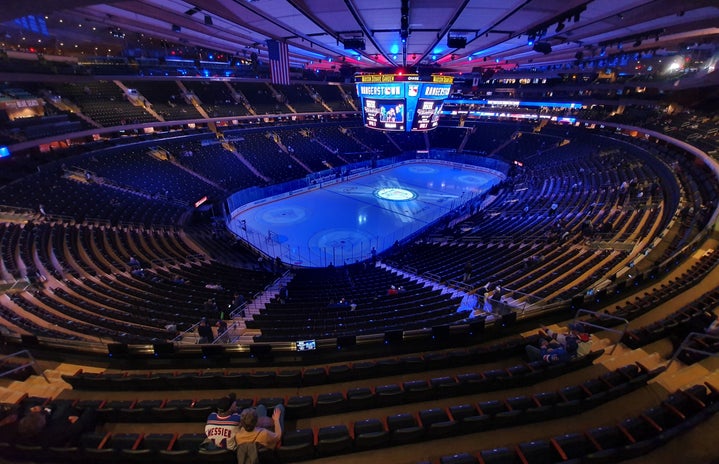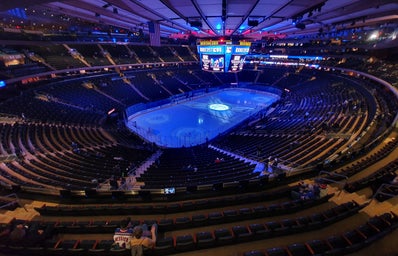Each new year, hockey fans across the nation look forward to the annual National Hockey League Winter Classic, a regular season game played in an outdoor arena. But 2024 marked a new beginning for hockey fans, and on January 1st, after a handful of exhibition games played across North America, the Professional Women’s Hockey League (PWHL) dropped the first puck in their inaugural season in front of a sold out Mattamy Centre in Toronto. This puck drop represented many professional debuts, and career comebacks for players, but most importantly, it represented a new dream for young girls everywhere; that a career in professional hockey is just as possible for them, as it is for their male counterparts. The very existence of the PWHL spreads a very important message; hockey isn’t just for boys anymore.
Right off the bat, The PWHL, which consists of six teams, hailing from Toronto, Minnesota, Montreal, Ottawa, Boston and New York broke records. Over 2.9 million Canadians tuned in for the inaugural game, and the record attendance at a professional women’s hockey game was broken twice in the span of just five days as 8,318 fans came out to show their support at the Ottawa home opener on January 2nd, and 13,316 attended the Minnesota home opener 4 days later. Although most of the players are from either the U.S.A or Canada, 12 different countries are represented within the league’s 157 players. Each team is set to play 24 regular season games, facing each opponent a total of four times, twice at home and twice on the road. In May, the top four ranked teams will move on to a best-of-five playoff series, which will then be followed by a league final.
For many players, the PWHL is not their first endeavor in professional women’s hockey, and this makes the league all the more important. The path to achieving a sustainable professional women’s hockey league has not been a straightforward one. Many young Canadians, especially those who grew up surrounded by the sport of hockey, remember the Canadian Women’s Hockey League (CWHL), which ceased operations for financial reasons in 2019. At the time of its collapse, the CWHL consisted of six teams across three countries; but it lacked the necessary characteristics of a true professional league. Structured as a not-for-profit entity, players paid for their own gear, the majority of league staff were volunteers, and player salaries ranged from $2,000-$10,000. The decision to fold the league left approximately 150 players, and some of the world’s best hockey players, in a state of complete uncertainty as they waited for women’s hockey to make its next move.
At the same time, the National Women’s Hockey League (NWHL), which later became the better known Premier Hockey Federation, was operating in the United States, but faced similar issues and criticisms to those of the CWHL. Often seen as rival leagues to one another the CWHL and the NWHL lacked any unity, and despite support from both players and lead staff, negotiations continued to fail at merging into one united North American women’s hockey league. With only slightly higher player salaries, ranging from $10,000-$26,000, the NWHL also lacked true financial stability.
The need for a unified professional women’s hockey league became undeniable. In May 2019, the Professional Women’s Hockey Players Association (PWHPA) was formed with the goal of advocating for professional women’s hockey, and creating the long deserved sustainable women’s hockey league North America (and the world) needed. Through the PWHPA, players began competing in exhibition games across Canada and the United States, catching the attention of countless young fans along the way – the passion for women’s hockey was at an all time high even through tough times.
In November 2022, the PHF (formerly NWHL) was asked to sell in order to form one unified league, and after many months of negotiations, the PHF ceased operations. Once again leaving some of the best players uncertain of their futures as their contracts were voided, all there was left to do was wait.
The PWHL was finally announced in August 2023. With player salaries averaging at $55,000, and the backing of some of the biggest names in sports, including Billie Jean King and Brian Burke, as well as the National Hockey League itself, who is working with the PWHL to plan special events and share their expertise; this league was designed to last. It’s an added bonus that so many NHL players have gone on to personally express their support for the league and shared their attendance at PWHL games online, which ultimately brings the PWHL more credibility, media coverage, and it’s great PR for both leagues as they look to grow the game of hockey.
Although the league itself was created in a mere six months, a sustainable professional women’s hockey league has been a long time coming. The PWHL represents the first time in women’s hockey history that these players are being treated with the respect and given the attention that they deserve. There’s a reason why so many women, including myself, teared up during the January 1st puck-drop; women’s hockey is here, and for the first time ever, it’s here to stay.


